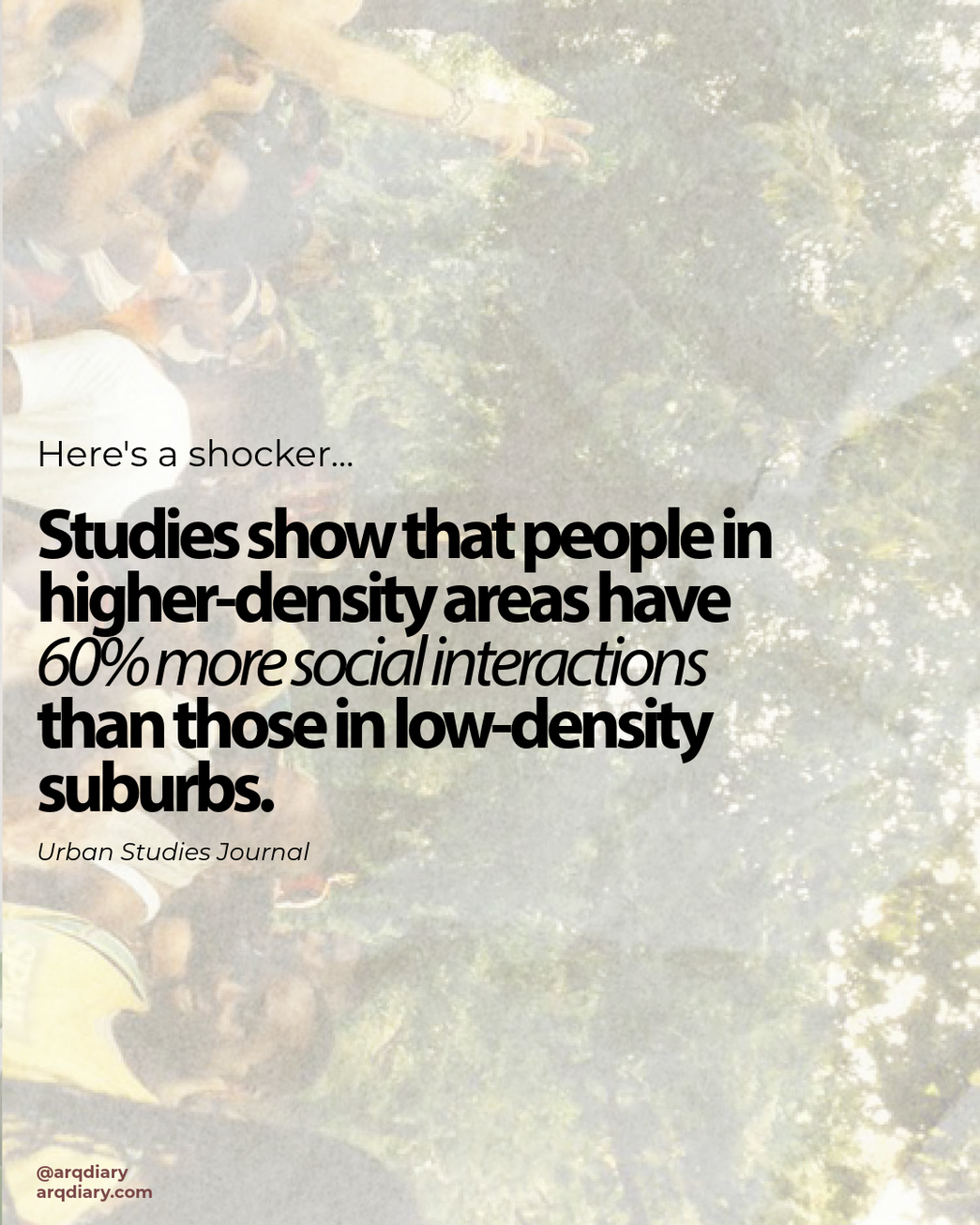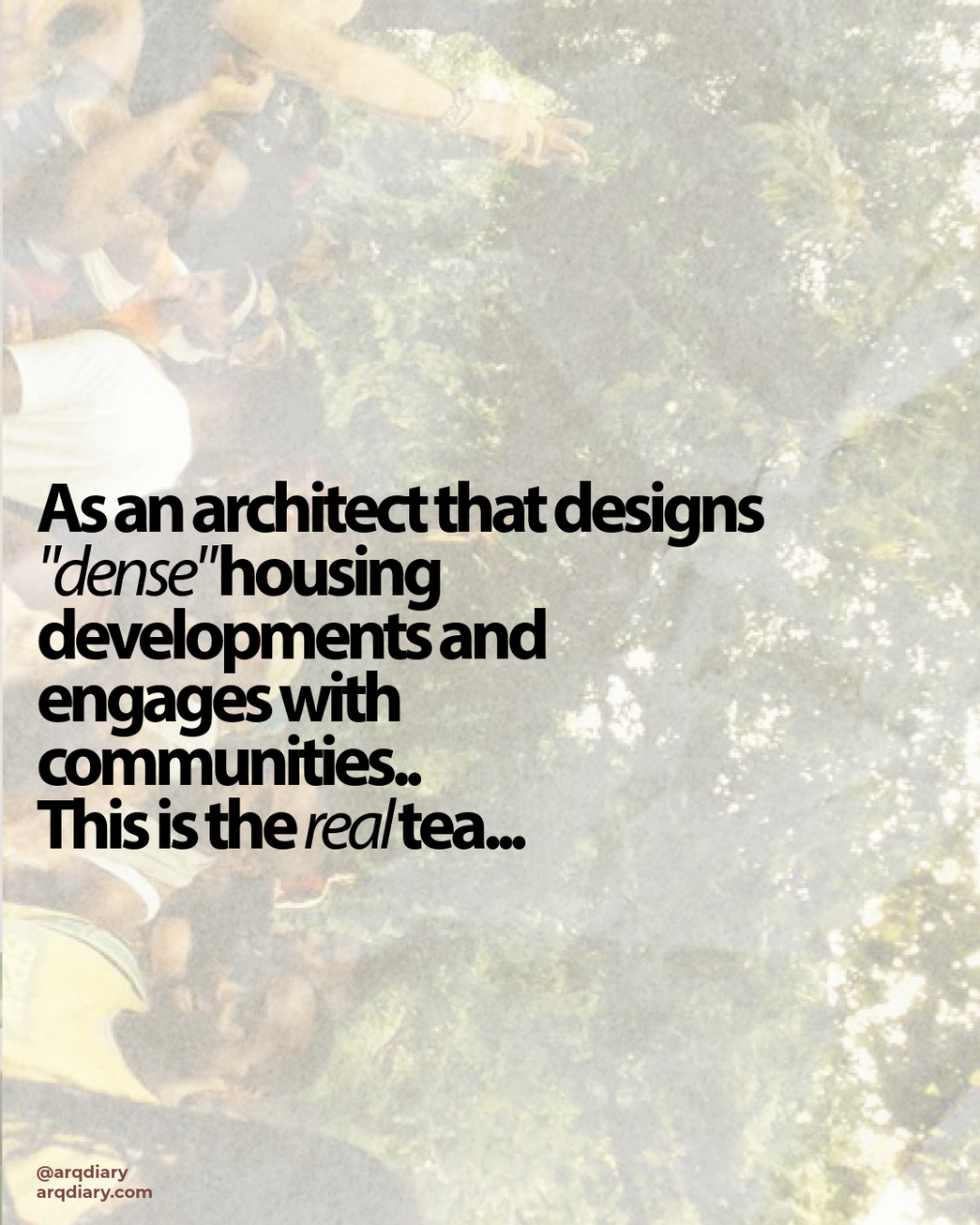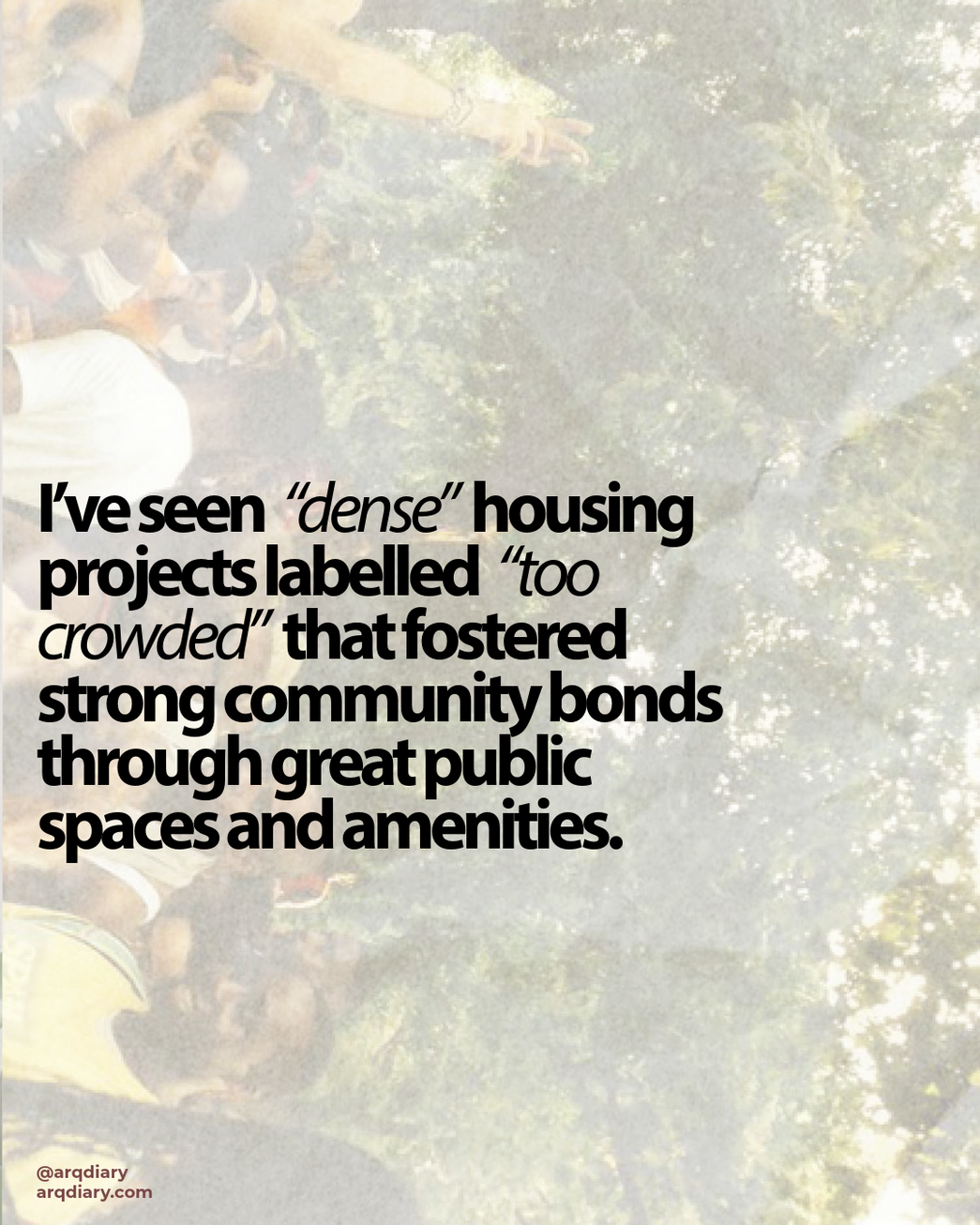Why “Density Kills Community” Is the Biggest Myth in UK Housing
- arqdiary

- Jul 8
- 3 min read
When it comes to urban housing, few myths get tossed around as casually — and as wrongly — as the idea that density kills community. If you’ve ever heard someone say “There are too many people here,” or “This place feels crowded and cold,” you’ve encountered this myth in action. But in reality, density itself is not the villain. The problem is how density is designed, managed, and integrated into the urban fabric.
Having worked on a range of housing projects across UK cities of various scales and challenges, I’ve seen firsthand how density can either destroy or nurture a sense of community. Spoiler alert: Density is a tool, not a curse.
Myth: Density Destroys Community
On the surface, it’s an easy conclusion to jump to. When neighbourhoods become crowded, some people feel they lose connection to their neighbours, experience less privacy, and struggle with overcrowded public spaces. This leads to assumptions that lower density (think suburban single-family homes) must be better for community building.
But this black-and-white thinking misses the mark. Density alone isn’t the problem; it’s what density looks like in practice.
Fact: Thoughtful Density Can Build Stronger Communities
Urban design research backs this up, including UK-based studies. For example:
A 2020 study by the UK’s National Housing Federation found that residents in well-designed higher-density developments reported 30% higher satisfaction with local community connections than those in low-density areas.
The Joseph Rowntree Foundation highlights that compact, mixed-use neighbourhoods foster stronger local economies, reducing dependence on cars and improving access to services, key for social interaction.
Transport for London’s analysis shows that walkable, dense areas encourage 25% more social contact and support local businesses, compared with car-dependent suburbs.
When people live closer together — with the right mix of homes, shops, green spaces, and public transport — there’s a greater chance to bump into neighbours, support local shops, and use parks or public spaces.
The Key to Success:
Are there safe, welcoming public spaces?
Is there a mix of uses — homes, shops, cafes, community centres?
Are the streets walkable and inviting?
Do residents feel a sense of ownership and pride in their neighbourhood?
If these boxes are checked, density doesn’t kill community — it can supercharge it.
What Often Goes Wrong: Poor Planning and Missing Amenities
Density gets a bad rep when it’s implemented poorly:
Towers or blocks stacked with identical units, but no green space or social areas.
Lack of local shops or services is forcing people to travel far for basics.
Streets are designed primarily for cars, not people, leading to social isolation.
No investment in community programmes or engagement.
These failings aren’t density’s fault. They’re a failure to support the social infrastructure density required.
My Experience: Seeing Density Done Right and Wrong
I’ve worked on projects where density created vibrant, connected neighbourhoods full of life. People gather in shared courtyards, local markets thrive, and children play safely nearby. These places feel alive because density is paired with thoughtful design.
On the flip side, I’ve seen “dense” housing projects criticised as soulless or alienating — but on closer look, the problem was a lack of amenities, poor maintenance, or disconnected design.
Density is a blank canvas — what matters is how we paint on it.
Why This Myth Matters
Believing that density kills community can stall progress towards sustainable, inclusive cities. Lower-density development often means more urban sprawl, longer commutes, higher carbon emissions, and less affordable housing.
The UK Committee on Climate Change warns that sprawling development patterns increase transport emissions by up to 20% per household compared to compact urban living.
By debunking this myth, we can advocate for smarter density that fosters social connection, environmental sustainability, and economic vitality.
Your Turn: What’s Your Experience with Density?
Have you lived in a dense neighbourhood that felt like home? Or felt isolated despite the open space? I want to hear your stories.
Drop a comment, DM me, or share this post to keep the conversation going. Because the future of housing depends on busting myths and sharing real talk.
























Comments